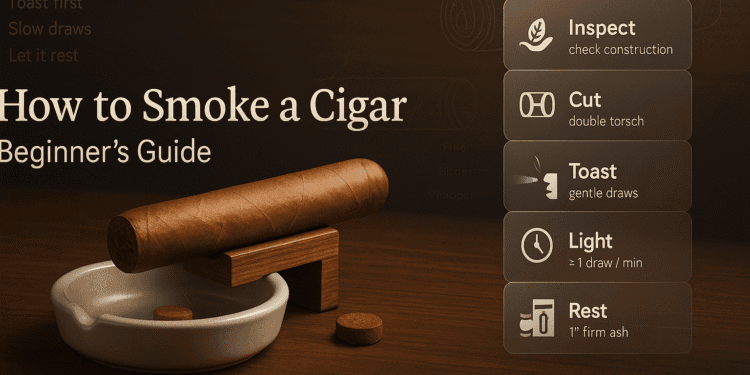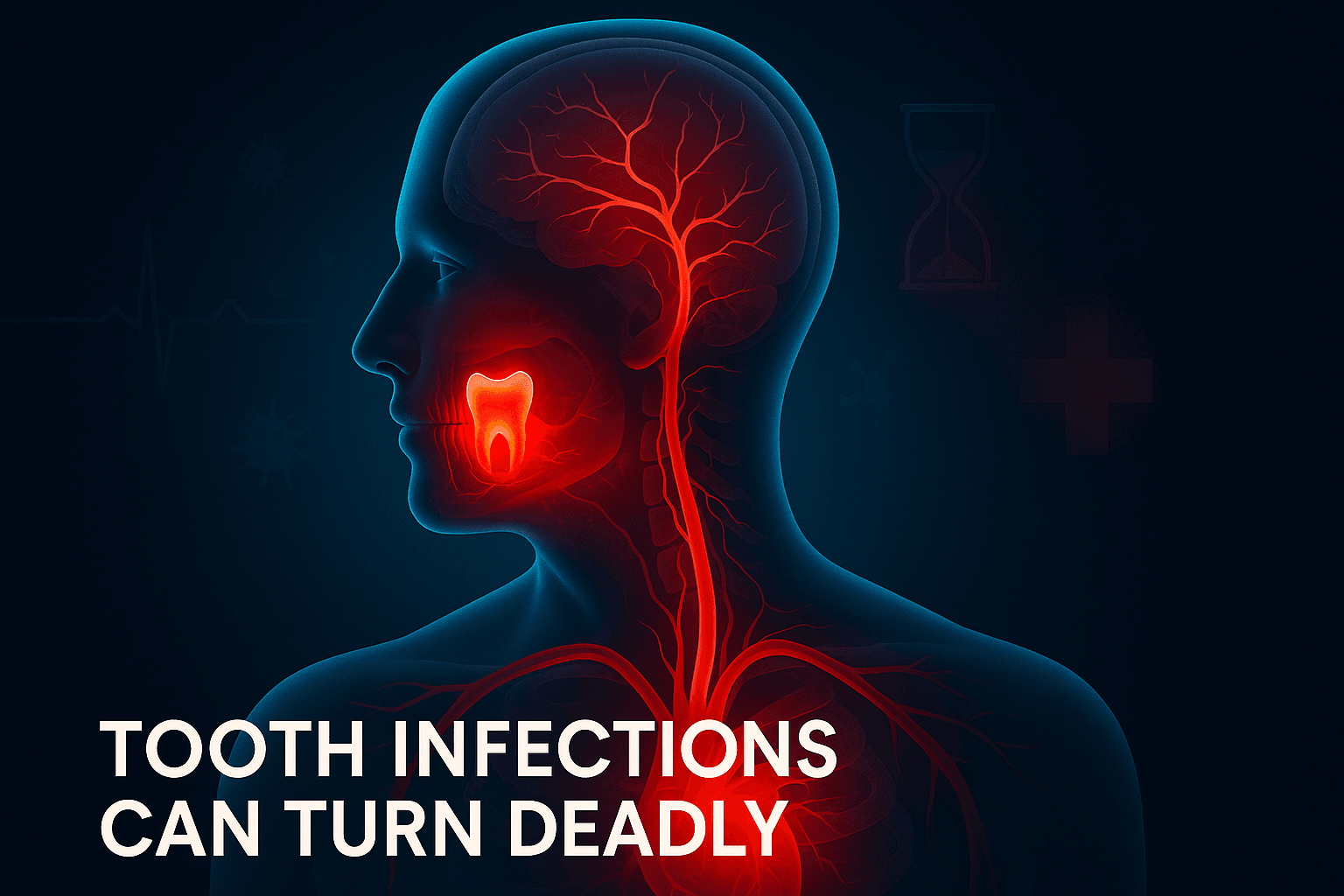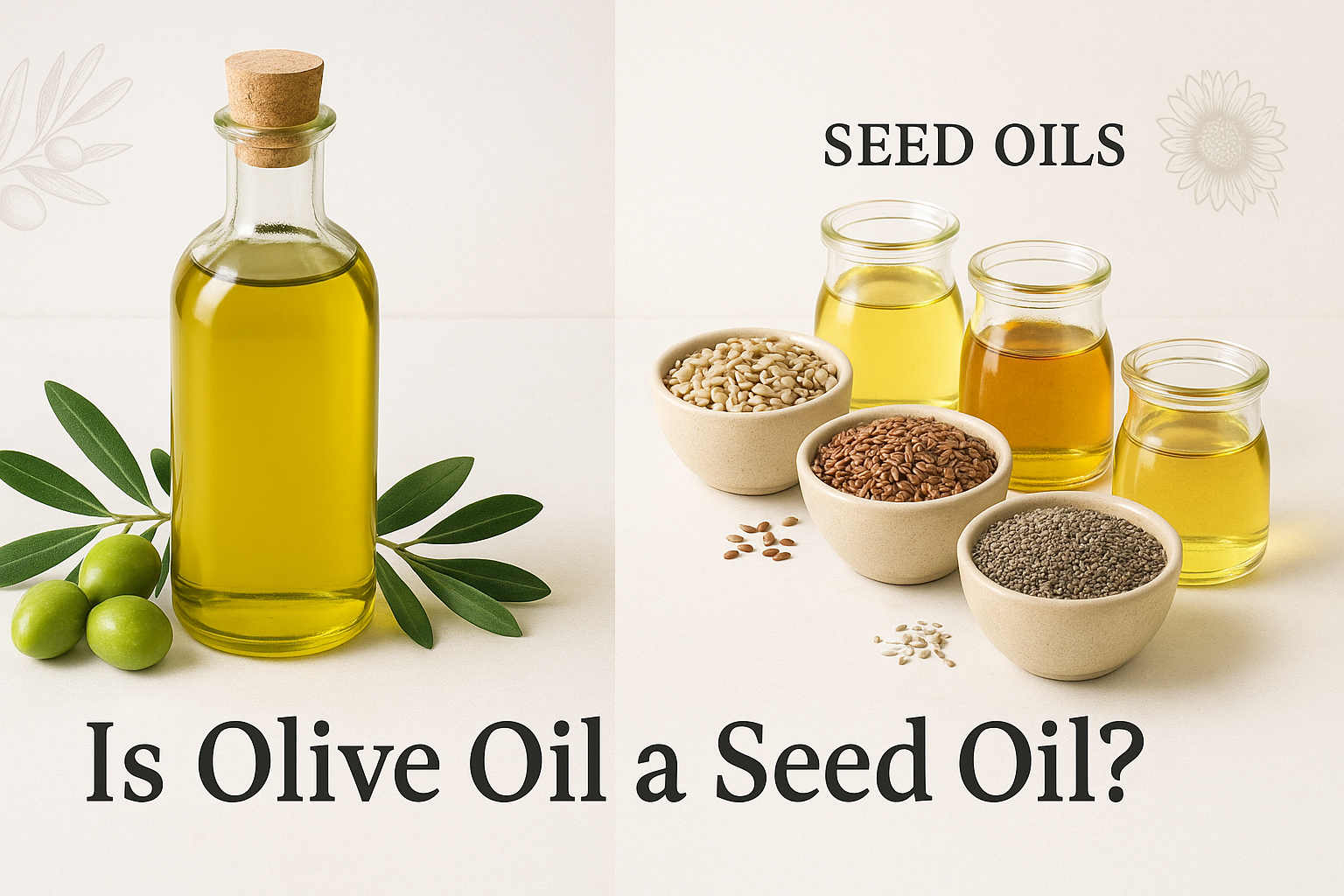How to Smoke a Cigar: A Complete Beginner’s Guide to the Art of Cigar Smoking
Have you ever wondered what makes cigar smoking such a revered pastime among enthusiasts worldwide? There’s something almost mystical about the ritual of lighting up a premium cigar – it’s not just about smoking, it’s about embracing a centuries-old tradition that combines craftsmanship, patience, and appreciation for the finer things in life.
Smoking a cigar isn’t like lighting up a cigarette and rushing through it. It’s a deliberate, meditative experience that demands your time and attention. Whether you’re celebrating a special occasion, closing a business deal, or simply taking a moment to unwind, learning how to properly smoke a cigar will enhance your enjoyment and help you understand why this practice has captivated people for generations.
In this comprehensive guide, we’ll walk you through everything you need to know about cigar smoking – from selecting your first stick to mastering the art of the perfect draw. Think of this as your roadmap to becoming a confident cigar aficionado.
Understanding Cigars – The Basics
Before you light your first cigar, it’s crucial to understand what you’re actually holding. A premium cigar is far more than just rolled tobacco – it’s a carefully crafted product that represents hours of skilled labor and years of agricultural expertise.
What Makes a Quality Cigar
A quality cigar consists of three main components: the filler, the binder, and the wrapper. The filler tobacco provides the primary flavor and strength, while the binder holds everything together. The wrapper, often the most expensive part, contributes significantly to the cigar’s appearance, burn characteristics, and taste profile.
The construction quality is paramount. When you gently squeeze a well-made cigar, it should feel firm but slightly springy, with no hard spots or soft areas that might indicate poor rolling or inconsistent tobacco distribution. The wrapper should be smooth, oily, and free from major veins or tears.
Different Types of Cigars
Cigars come in various shapes and sizes, each offering a unique smoking experience. The most common shapes include parejos (straight-sided cigars) and figurados (shaped cigars with tapered ends). Within these categories, you’ll find everything from petite coronas perfect for a quick smoke to massive Churchill-sized cigars that can last for hours.
The origin of the tobacco also plays a massive role in flavor. Cuban cigars are legendary for their complexity, while Nicaraguan cigars often offer bold, spicy profiles. Dominican cigars tend to be milder and more approachable for beginners, making them an excellent starting point for your cigar journey.
Choosing Your First Cigar
Selecting your first cigar can feel overwhelming, especially when you’re standing in a well-stocked humidor with hundreds of options. Don’t worry – even seasoned smokers remember the uncertainty of their first purchase.
Size and Shape Considerations
For beginners, size matters more than you might think. Larger cigars aren’t necessarily stronger – in fact, they often provide a more complex, nuanced experience because there’s more room for different tobacco blends. However, they also require a significant time commitment, sometimes lasting three hours or more.
A robusto (approximately 5 inches by 50 ring gauge) represents the sweet spot for most newcomers. It’s substantial enough to showcase the cigar’s character while remaining manageable in terms of smoking time, typically lasting 45 minutes to an hour.
Strength and Flavor Profiles
Cigar strength ranges from mild to full-bodied, and this has nothing to do with flavor intensity. Strength refers to the nicotine content and how it affects your body, while flavor describes the taste complexity you’ll experience.
As a beginner, start with mild to medium-strength cigars. Connecticut-wrapped cigars often provide creamy, smooth flavors with notes of cedar, nuts, and subtle spices – perfect for developing your palate without overwhelming your system.
Beginner-Friendly Recommendations
Consider starting with well-regarded brands like Macanudo Café, Romeo y Julieta Reserva Real, or Arturo Fuente Gran Reserva. These cigars offer consistent construction, approachable flavors, and forgiving smoking characteristics that won’t punish minor technique mistakes.
Essential Tools and Accessories
You wouldn’t try to eat soup with a fork, and you shouldn’t attempt to smoke a cigar without the proper tools. While cigars can technically be smoked with minimal equipment, having the right accessories dramatically improves the experience.
Cigar Cutters
A sharp, clean cut is essential for proper draw and even burning. Guillotine cutters are the most popular choice, providing a straight, clean cut across the cap. Make sure to invest in a quality cutter – cheap ones often crush the tobacco, creating draw problems and uneven burns.
Double-blade guillotine cutters typically provide the cleanest cuts, while single-blade versions are more compact and travel-friendly. V-cutters create a wedge-shaped opening that some smokers prefer for certain cigar shapes.
Lighters and Matches
Never use a standard lighter or candle to light your cigar. The chemicals and additives can impart off-flavors that ruin the smoking experience. Instead, use either wooden matches (cedar is ideal) or a butane lighter specifically designed for cigars.
Torch lighters provide the most control and heat, making them perfect for outdoor smoking or windy conditions. Soft-flame butane lighters offer a gentler approach that some purists prefer, though they require more patience and skill to master.
Ashtrays and Storage
A proper ashtray isn’t just about containing ash – it should have deep slots that support your cigar without crushing it. The best ashtrays are made from materials that won’t retain odors or affect the cigar’s flavor.
For storage, even if you’re only buying one cigar at a time, consider investing in a small humidor or at least some boveda packs to maintain proper humidity levels.
The Pre-Smoking Ritual
The moments before you light your cigar are just as important as the smoking itself. This preparation phase sets the stage for your entire experience.
Inspecting Your Cigar
Before cutting, take a moment to examine your cigar thoroughly. Look for any obvious flaws like cracks, soft spots, or areas where the wrapper might be loose. Roll it gently between your fingers – it should feel firm and consistent throughout its length.
Hold the cigar close to your nose and inhale gently. You should detect pleasant tobacco aromas, possibly with hints of cedar, leather, or subtle spices. Any harsh, ammonia-like smells might indicate poor storage or construction issues.
Proper Cutting Techniques
The cut you make determines how easily air flows through the cigar, directly affecting your smoking experience. Cut too little, and you’ll struggle to draw; cut too much, and the wrapper might unravel.
Position your cutter about 1/16 to 1/8 inch from the rounded end of the cigar. Make the cut in one swift, confident motion – hesitation often leads to uneven or torn cuts that can ruin the cigar.
Different Cutting Methods
While straight cuts work for most cigars, some shapes benefit from different approaches. Torpedo-shaped cigars often smoke better with smaller cuts that can be gradually enlarged if needed. Some smokers prefer punch cuts for certain ring gauges, creating a small circular hole instead of removing the entire cap.
Lighting Your Cigar Correctly
Lighting a cigar properly requires patience and technique. Rush this process, and you’ll likely end up with uneven burning that affects the entire smoking experience.
The Toasting Process
Begin by “toasting” the foot of your cigar without actually touching the flame to the tobacco. Hold the cigar at a 45-degree angle about an inch above the flame, rotating it slowly to warm the tobacco evenly. You’ll see the edges begin to char and turn white.
This process prepares the tobacco for lighting and helps ensure an even burn from the start. Take your time – there’s no rush, and patience here pays dividends throughout your smoke.
Achieving an Even Light
Once the foot is properly toasted, place the cigar in your mouth and draw gently while continuing to hold it near (but not touching) the flame. The tobacco should ignite evenly across the entire foot. If you notice any dark spots or uneven burning, continue applying heat to those areas until the entire foot glows orange.
Check your light by gently blowing on the foot – the entire surface should glow evenly. If you see any dark spots, touch them up with your lighter before proceeding.
The Art of Smoking
Now comes the moment you’ve been preparing for – actually smoking your cigar. This isn’t about inhaling quickly and moving on; it’s about savoring each moment and appreciating the complex flavors unfolding with each draw.
Proper Drawing Technique
Unlike cigarettes, cigars should never be inhaled into your lungs. Instead, draw the smoke into your mouth, let it swirl around your palate, then exhale slowly. This allows you to taste the full complexity of flavors without overwhelming your system with nicotine.
Take slow, gentle draws – about one per minute is ideal. Aggressive or frequent puffing causes the cigar to burn too hot, creating harsh, bitter flavors and potentially causing burn issues.
Pacing Your Smoke
A properly paced cigar should stay lit between draws through residual heat. If you find yourself constantly relighting, you’re probably not drawing frequently enough. Conversely, if the cigar feels harsh or bitter, you might be smoking too quickly.
Think of cigar smoking like sipping fine wine – each draw should be deliberate and contemplative. Use the time between puffs to appreciate the aroma, observe the ash formation, and simply relax.
Understanding Burn Rate
Different cigars burn at different rates depending on their construction, tobacco blend, and environmental conditions. A well-made cigar should burn evenly down its length, creating a firm ash that can grow to an inch or more before naturally falling off.
If one side burns faster than the other, try slowing your smoking pace or touching up the slower-burning side with your lighter. Consistent, even burning is the hallmark of both quality cigars and proper smoking technique.
Cigar Etiquette and Social Aspects
Cigar smoking often involves social interaction, whether in a dedicated lounge, at special events, or in informal gatherings. Understanding basic etiquette enhances the experience for everyone involved.
Always ask permission before lighting up, especially in enclosed spaces. Even in designated smoking areas, be mindful of others’ comfort and personal space. Never blow smoke directly at someone, and be conscious of wind direction when smoking outdoors.
When sharing cigars or smoking in groups, avoid discussing the price of your cigars unless specifically asked. The focus should be on enjoyment and fellowship, not showing off expensive purchases. Similarly, avoid critiquing others’ cigar choices – personal preference plays a huge role in what someone enjoys.
If you need to step away from your cigar temporarily, simply place it in an ashtray. Unlike cigarettes, cigars will naturally extinguish themselves when not being actively smoked, and you can relight them later without significantly affecting the flavor.
Troubleshooting Common Issues
Even experienced smokers occasionally encounter problems with their cigars. Knowing how to identify and address common issues can save an otherwise ruined smoking session.
Uneven burning is probably the most common problem, often caused by inconsistent humidity, poor construction, or smoking too quickly. Minor burn issues can usually be corrected by slowing your smoking pace or carefully touching up problem areas with your lighter.
If your cigar becomes plugged and difficult to draw, try gently massaging the area between your fingers to loosen the tobacco. In extreme cases, you might need to use a draw tool to carefully clear the blockage, though this should be done very carefully to avoid damaging the cigar.
Harsh or bitter flavors usually indicate that you’re smoking too fast, causing the tobacco to burn too hot. Slow down your pace and let the cigar cool between draws. If the problem persists, the cigar might be poorly constructed or stored improperly.
Storage and Preservation
Proper storage is crucial for maintaining cigar quality, even if you only keep a few on hand. Cigars are living products that continue to age and develop when stored correctly, but they can quickly deteriorate under poor conditions.
Ideal storage conditions involve maintaining 65-70% relative humidity and temperatures around 65-70°F. Even small desktop humidors can effectively store a modest collection, while larger collections might require cabinet humidors or even dedicated smoking rooms.
If you don’t have a humidor, cigars can be temporarily stored in plastic bags with Boveda humidity packs, though this isn’t recommended for long-term storage. Never store cigars in regular plastic bags without humidity control, as they’ll quickly dry out and become unsmokable.
Health Considerations
It’s important to address the health aspects of cigar smoking honestly and directly. While cigars are often perceived as less harmful than cigarettes because the smoke typically isn’t inhaled, they still carry health risks that every smoker should understand.
Cigars contain nicotine and numerous other chemicals that can cause health problems, including increased risks of mouth, throat, and esophageal cancers. Even without inhaling, nicotine absorption through the mouth and throat tissues can lead to dependence.
The key difference between occasional cigar smoking and regular cigarette smoking lies in frequency and inhalation patterns. Most cigar enthusiasts smoke infrequently – perhaps a few cigars per month – and don’t inhale the smoke. However, this doesn’t eliminate health risks entirely.
If you choose to smoke cigars, do so in moderation and be aware of the potential consequences. Regular medical checkups that include oral health examinations are especially important for anyone who uses tobacco products regularly.
Conclusion
Learning how to smoke a cigar properly transforms what could be a harsh, unpleasant experience into something truly enjoyable and meaningful. The key lies in understanding that this isn’t about quick gratification – it’s about patience, appreciation, and taking time to savor life’s finer moments.
From selecting your first cigar to mastering the perfect draw, each step in the process contributes to your overall enjoyment. Remember that becoming comfortable with cigars takes time and practice. Don’t be discouraged if your first few experiences aren’t perfect – even seasoned aficionados continue learning and refining their technique.
The world of cigars offers incredible diversity in flavors, strengths, and experiences. Take your time exploring different brands, sizes, and origins. Keep notes on what you enjoy and what doesn’t work for your palate. Most importantly, remember that the “best” cigar is simply the one you enjoy most.
Whether you’re celebrating special occasions or creating regular moments of relaxation, proper cigar smoking technique will enhance your appreciation for this timeless tradition. Take it slow, be patient with yourself, and enjoy the journey of discovery that awaits in every perfectly crafted cigar.
Frequently Asked Questions
1. How long should a cigar last when smoking it properly?
The smoking time depends entirely on the cigar’s size. A small corona might last 30-45 minutes, while a large Churchill can take 2-3 hours. The key is pacing yourself with approximately one draw per minute, allowing the cigar to burn naturally between puffs.
2. Is it normal for a beginner to feel lightheaded when smoking cigars?
Yes, this is completely normal and usually indicates that you’re either smoking too quickly or choosing cigars that are too strong for your current tolerance. Slow down your pace, eat something beforehand, and consider switching to milder cigars until you build tolerance.
3. Can I save a cigar and smoke it later if I can’t finish it?
Absolutely! Unlike cigarettes, cigars can be extinguished and relit later, though the flavor may be slightly different. Simply place the cigar in an ashtray and let it go out naturally. When relighting, you may want to cut off the charred end for the best flavor.
4. How do I know if a cigar is properly humidified before smoking?
A properly humidified cigar should feel slightly springy when gently squeezed and shouldn’t crackle when handled. The wrapper should be smooth and oily-looking. If it feels hard or brittle, it’s too dry; if it feels spongy or soft, it may be over-humidified.
5. What’s the difference between expensive and affordable cigars for beginners?
While expensive cigars often feature premium tobaccos and superior construction, beginners might not notice these subtleties immediately. Start with well-regarded, moderately-priced cigars to develop your palate before investing in premium options. Quality construction matters more than price for learning proper technique.
Please don’t forget to leave a review.









